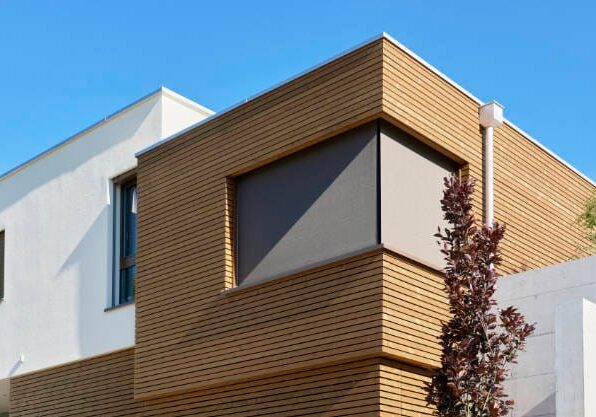How Exterior Blinds Can Work With Part L Energy Efficiency Requirements

Most UK homes are incredibly leaky when it comes to energy efficiency despite the UK governments ramping up efforts to get us to net zero in 2050.
There are many improvements households can make such as insulation, good quality double glazing and installing low-carbon heating systems and solar panels.
But as our climate warms and we experience higher temperatures and more frequent heat waves, external blinds are also becoming an essential energy efficiency measure.
External Blinds keep you cool in summer
The trend for large windows, as well as glass roof windows and French doors leading out into the garden, continues to grow, which means solar glare can become a massive problem for homeowners during the summer and on sunny winter days.
The sunlight can cause a greenhouse effect, making the inside of a room or the whole house too hot for residents.
Part O building regulations mean new homes must mitigate the possibility of overheating caused by solar glare by installing solar shading such as external blinds and other solutions like awnings, louvres, soleil brise and solar glass and ventilation.
Research, alongside our own case studies, shows that external blinds are extremely effective at stopping solar gain, reducing the indoor temperature dramatically.
Thermometers record a drop of between five and seven degrees Celsius after external blinds are installed, creating a comfortable temperature for residents.
Keeping energy costs down with External Blinds
External blinds also work with Part L building requirements around energy efficiency because they reduce heating and cooling requirements, and use minimal energy to lower and raise.
They can be controlled remotely via your smartphone or a home appliance, allowing you to keep your home or office at an optimum temperature, whether you’re there or not. And for buildings that aren’t dwellings, external shading can significantly decrease HVAC loads, meaning less energy is required to keep the building cool.
Air conditioning units, on the other hand, can double your electricity bills as well as your carbon footprint.
But they’re not only expensive to run but also release hydrofluorocarbon (HFC) refrigerants which can act as greenhouse gases trapping heat in the atmosphere and therefore exacerbating climate change.
Keep heat inside in winter
External blinds allow you to let as much of the sun’s glare into the building as you like in the winter to help warm your home or office for free.
The space between the blinds and the window creates an insulating layer which stops the heat inside from escaping as quickly.
Although there haven’t been any scientific studies proving this theory, we have plenty of anecdotal evidence from homeowners who have had external blinds fitted and find their homes are warmer as a result.
External blinds can also reduce any drafts you may experience around the windows. And they also offer flexibility compared to fixed alternatives like louvres, brise soleil or overhangs, they can be raised out of the way during the winter to allow the winter sun in.
Technical considerations for architects
When specifying external blinds for compliance with Part L and Part O regulations, architects should consider solar heat gain coefficients (SHGC) and g-values of the blind fabric, which typically range from 0.05 to 0.15 for high-performance external shading systems. The thermal transmittance (U-value) improvement can be significant, with external blinds potentially reducing window U-values by 10-15% through the insulating air gap created.
For Part O compliance calculations, external blinds can achieve solar shading factors of 0.1-0.3, depending on fabric specification and installation method, making them highly effective for preventing overheating in glazed facades. Integration with building management systems (BMS) allows for automated control based on solar irradiance levels, typically programmed to deploy when solar radiation exceeds 200-300 W/m².
Keep your home looking cool inside and out
Architects, designers, and homeowners choose external blinds for their attractive, sleek look, flexibility and effectiveness.
And you don’t need to worry about not being able to see out through the blinds.
They are made with heat reflecting fabric with a special weave that allows you to see the view outside while letting natural light into the room.
Want to learn more about External Blinds?
Our team at Kensington Blinds has more than 40 years of experience designing and installing blinds and specialises in highly complex projects tailored to your specific needs.
If you’d like to have a chat with our experts, we’d be more than happy to talk about our work on heritage, residential and commercial projects for external or internal blinds, and to provide you with a quote.



